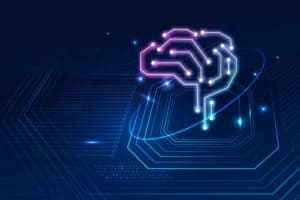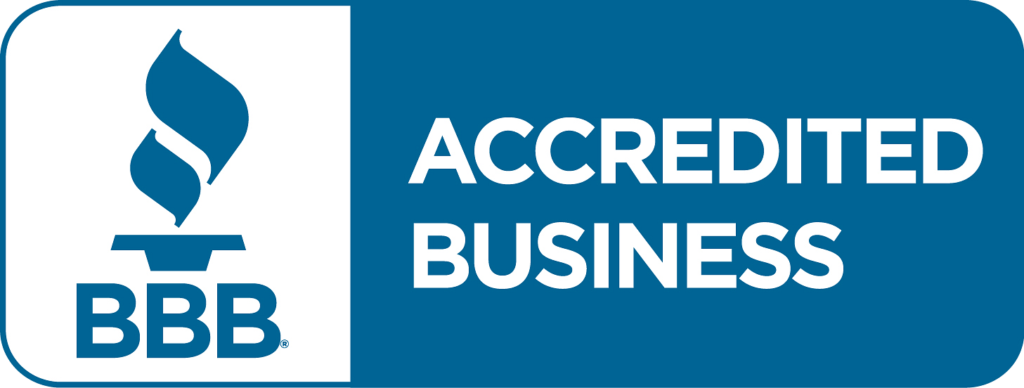To get patent protection for software and computer-implemented inventions, you must first understand the hurdles to apply for a software patent. During patent prosecution, your invention must meet many legal requirements for software patent protection. The application must meet software patent eligibility and fulfill four legal requirements. Patent lawyers often refer to these four requirements by section number in the federal patent statute. Together, these four requirements form the basis of patent law in the United States:
- Novelty (Section 102): The invention must be novel compared to the prior art, i.e., it was never published or publicly known.
- Non-Obviousness (Section 103): The invention must not be obvious to someone skilled in the relevant art in view of the prior art. This means that the invention must provide some new and significant advantage over previously known technology.
- Description (Section 112): The invention must be described in sufficient detail to allow someone skilled in the relevant art to make and use it. This description is known as the specification.
- Subject Matter Eligibility (Section 101): The invention must be the patent-eligible subject matter.

In addition, you must know that an invention is only software patent eligibility when it meets the four subject matter eligibility statutory categories -process, machine, manufacture, and composition of matter. These four categories are part of the patent act states,
“any new and useful process, machine, manufacture, or composition of matter.”
On the other hand, inventions that do not fall under these categories are not patentable. Because the subject matter eligibility is in constant flux, it is the biggest challenge for software, computer-implemented, and life-sciences startups and inventors who need to adjust their patent strategy to recent changes and continuing fluidity of this section of the patent law requirement.
Today, the benchmark for what is considered patent-eligible in the U.S. has become one of the law’s most confusing and unpredictable areas. The confusion is particularly relevant for technologies that utilize software and life sciences. Because innovative software services arise in almost every technology sector, recent changes in patent law have impacted the patentability of many inventions in various technologies, ranging from artificial intelligence to even automotive equipment. This article will detail software and computer-implemented related patentable subject matter eligibility. You can learn more about life sciences, biotechnologies, and diagnostics; by reading my previous blogs.
Due to this morass of legal uncertainty, companies and inventors often struggle to determine whether or not their latest innovation is eligible for patent protection. Given the high stakes involved, businesses must stay abreast of the latest developments in this ever-changing area of law. Thus, these companies must know and understand how they can protect their intellectual property related to software and computer systems. The objective of this article is to discuss the details of this law and how to circumvent it.
This article provides practical guidance for startups, inventors, and technology companies to navigate subject matter eligibility for software and computer-implemented technology-related patents. To best understand these strategies, you must know the history and case law background of the 101 patent law section because much confusion and chaos arose from this case law.

What is software patent eligibility?
As the name implies, the law of subject matter eligibility determines the types of things that are “eligible” to be patented. So, for example, medical devices and manufacturing processes may be patent-eligible subject matter; however, mathematical equations alone are not patent-eligible subject matter. Thus, for example, an equation such as E=mc2 can’t be patented even when Einstein discovered it met all the other novelty (102 section) and non-obviousness (103 section) requirements for patentability.
The case law started to alter the subject matter eligibility in 2010 when Supreme Court issued a decision in Bilski v. Kappos that clarified the exceptions to patentable subject matter under $101. The Court stated three exceptions: “laws of nature, physical phenomena, and abstract ideas.” The Court explained that these exceptions are “fundamental building blocks of human ingenuity” and that they are “the basic tools of scientific and technological work, Parker v. Flook :: 437 U.S. 584 (1978) – Justia Law. As a result, the Court held that patents on building blocks should not be allowed. This decision has had a significant impact on the patent landscape.
The major onset legal case related to software that set the entire state of 101 section chaos is the Alice Corp. v. C.L.S. Bank (2014). Since the Alice case, many inventions and technologies have become patent-ineligible subject matter, effectively dwindling the number of U.S. software- and computer-related patents.
Alice’s patents were of three categories:
(1) method patents: reciting methods of parties’ obligations in the exchange
(2) data processing system patents: patents regarding data processing systems,
(3) computer-readable media patents: patents that claim computer-readable media (such as DVDs and C.D.s) containing program code for directing these securities exchanges.
The relevant patents:
- S. patent 5,970,479 filed 1992, issued 1999
- S. patent 6,912,510 filed 2000, issued 2005
- S. patent 7,149,720 filed 2002, issued 2006
- S. patent 7,725,375 filed 2005, issued 2010
In Alice Corporation v. C.L.S. Bank International, the United States Supreme Court held that Alice Corporation’s patents on computer-implemented methods and systems for mitigating “settlement risk” in financial transactions were invalid because they claimed only abstract ideas. The case arose when C.L.S. Bank, which itself used similar software to mitigate settlement risk, filed a declaratory judgment action against Alice Corporation, asserting that Alice’s patents were invalid. The district court agreed with C.L.S. Bank, and Alice Corporation appealed. In a unanimous decision, the Supreme Court affirmed the district court’s holdings that Alice Corporation’s patents were invalid. Writing for the Court, Justice Clarence Thomas held that a claimed invention is ineligible for patent protection if it claims only an abstract idea.
To determine whether a claimed invention is eligible for patent protection, courts must first determine whether the claimed invention is directed to a patent-ineligible concept. If so, courts then ask whether the claimed invention contains an “inventive concept” – i.e., an element or combination of elements sufficient to ensure that the claim amounts to significantly more than the ineligible concept itself.
In the Alice case, the Supreme Court held that Alice Corporation’s patents claimed only abstract ideas. Thus, they were ineligible for patent protection. In this case, the Court found that the concept of a third-party intermediary is an abstract idea, and merely executing the idea on a generic computer is not patentable subject matter eligible. As a result, the Court invalidated a method patent for using a computer system as an intermediary to monitor the parties’ performance in a financial exchange transaction. The invention failed to provide “something more.” Unfortunately, the Court did not shed any light on what they meant by “something more,” causing much confusion and uncertainty.
This case had far-reaching implications for the software industries, which often rely on patents to protect their inventions.
As a result, many software and computer-implemented technologies are considered “abstract ideas” that are not patent-eligible, regardless of how novel and innovative the invention may be.

Patent protection for software – avoid abstract ideas
The critical question, then, is, what is an abstract idea? The legal concept of abstract ideas as the patent-eligible subject matter had been around for decades before the Alice case. Before the Alice case, the standard abstract idea in earlier Supreme Court cases was a mathematical formula. For instance, in the 1970s, Parker v. Flook case dealt with a patent claim that recited a mathematical formula for calculating specific values in a chemical process. Because the patent claims recited the mathematical formula with only conventional “post-solution” activities, the claims were deemed to be subject matter ineligible.
Still, many patent-eligible pre-Alice inventions originated from or used mathematical formulas and other abstract ideas. As the Supreme Court stated, multiple times stated that: “While a scientific truth, or the mathematical expression of it, is not patentable invention, a novel and useful structure created with the aid of knowledge of scientific truth may be.”Thus, even if an invention used or derived from an abstract idea, such as a mathematical formula, it was, pre-Alice, easy to show the invention itself was not an abstract idea. Unfortunately, Alice changed and broadened the definition of “abstract ideas.’
The Alice decision has created a lot of uncertainty for software patent attorneys. Before Alice, there was no standard and precise definition of what constituted an abstract idea. However, most patent attorneys understood the types of claims considered abstract ideas and, thus, ineligible subject matter. Generally speaking, as long as the patent application didn’t claim something equivalent to a mental thought process, a business concept, or mathematical formula, it would not be considered an abstract idea. However, the Alice ruling has called this understanding into question. Consequently, many software patent lawyers are now struggling to determine what types of claims will be allowed and which claims will be rejected.
In the aftermath of Alice, many issued patents were invalidated by the Federal Courts and rejected by the patent office under section 101. Pre-Alice invalidation based on section 101 was rare.
The Alice decision has profoundly impacted software patents, invalidating thousands of patents and causing many companies to reexamine their patent portfolios. The Alice case dealt with a software-implemented invention, and most patents invalidated under Alice have related to software and software-controlled systems. As a result, software patents are now more challenging to obtain, and many companies have been forced to reevaluate their patent strategies. The Alice decision has had a far-reaching impact on the software industry.
Federal Circuit’s approach to patent eligibility lacks a clear, consistent standard causing much confusion and chaos. This has led Judges to have their own divergent and evolving approaches to patent eligibility, which means it’s nearly impossible to predict what the Federal Circuit will consider patent-eligible in any given case. This lack of predictability makes it very difficult for companies and inventors to determine whether their products and inventions are eligible for patent protection. The Courts and Congress need to establish a more uniform approach to patent eligibility so that the system has more certainty and predictability.
Patent protection for software-summary
To understand how the Alice decision affects intellectual property related to software and computer systems, it’s necessary first to understand the history and context of the overall patent system. The Supreme Court rendered the Alice decision in 2014, significantly impacting how patents are evaluated for software and computer-implemented inventions. Before Alice, obtaining a patent for software-related inventions was relatively easy. However, after Alice, the standards for patentability became much higher. For example, it’s necessary to prove that the invention is more than an abstract idea to get a patent. Thus, making it more difficult for tech companies to obtain patent protection for their technologies. If you’re a tech company and you have questions about how the Alice decision impacts the patentability of your technology, please get in touch. We can help you navigate this complex area of law and protect your intellectual property rights.
Software patent protection-conclusion
In my next post, I’ll walk you through the U.S. Patent and Trademark Office’s test for determining whether a claim is patent-eligible under the Alice framework. Then, I will present strategies on how software and computer-implemented inventions can pass the test at one or more steps of the Alice framework test. If you want to determine whether your invention is patent subject matter eligible, it’s essential to understand how the USPTO interprets and applies the Alice Framework.
Finally, I will discuss other tactics to circumvent patentable subject matter ineligibility. Please read my previous blog for similar strategies for avoiding life science-related patent-eligible rejection.
Software patent protection-conclusion
Hire a patent attorney or a patent attorney who is registered with the USPTO; check registered patent practices here. We can help you navigate the intricacies of software patent application preparation and process and increase your chances of protecting your software patent because we understand the software patent-related complexities. Both patent drafting and patent prosecution are complex processes, and it is important to ensure that all legal requirements are met to avoid potential problems. Consulting with a patent attorney or patent attorney can ensure that your application is in order and that all the necessary steps are taken.
Hiring a professional to help you with your patent application can save you time and money in the long run and give you peace of mind knowing that your software product is adequately protected. By consulting with a patent attorney or agent, you can be sure that your application is on track and that you are taking all the necessary steps to protect your invention. Contact us today for a free initial consultation and learn more about how we can help you with your patent application.




